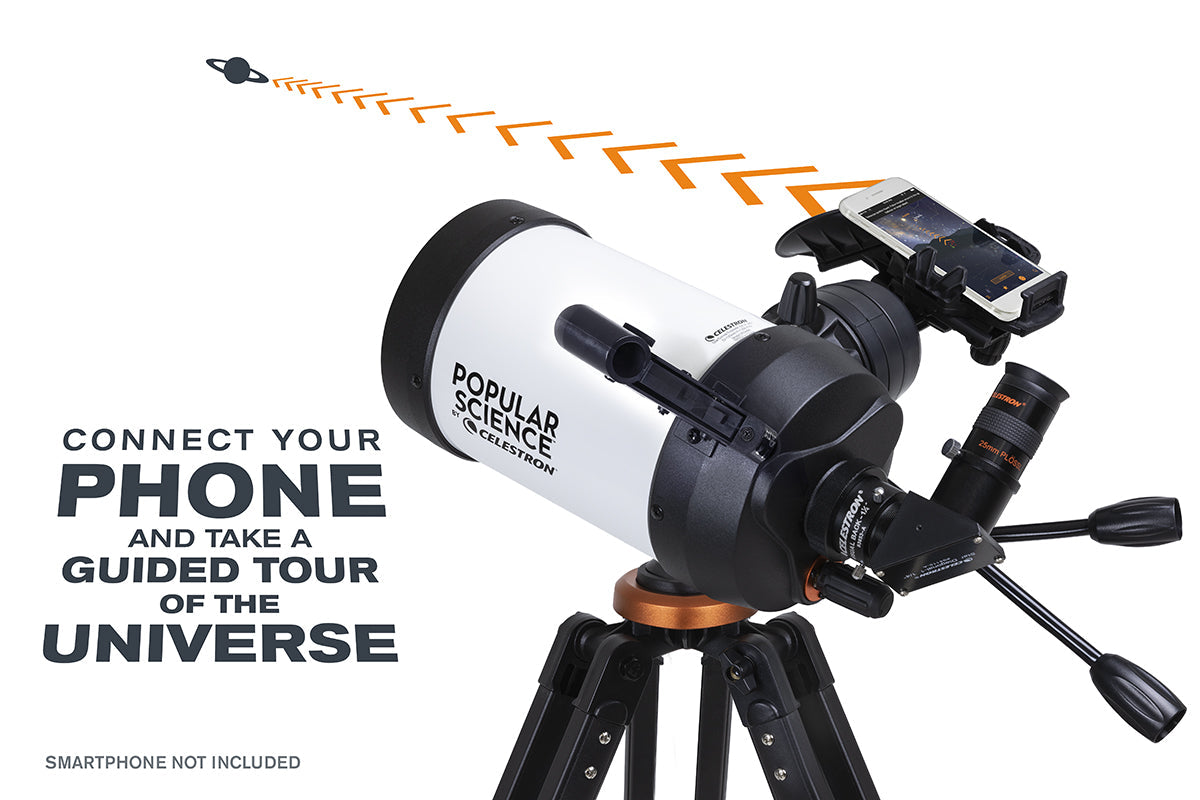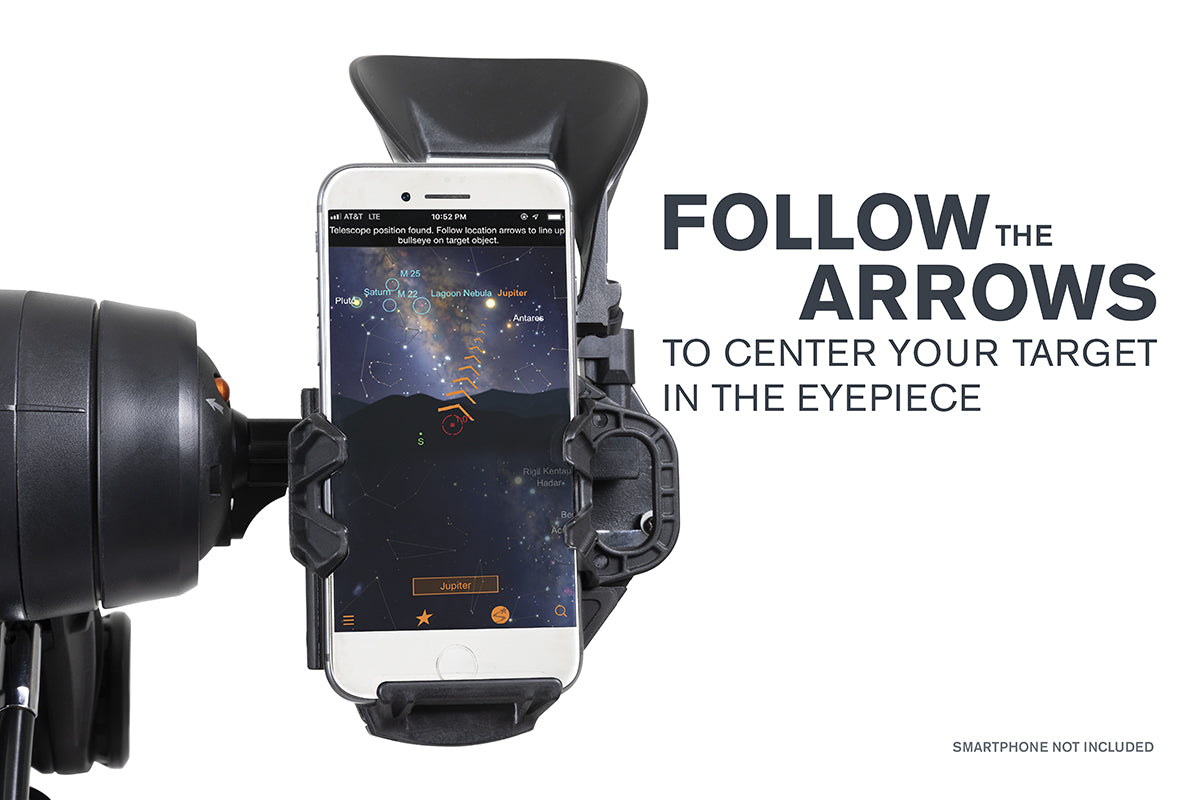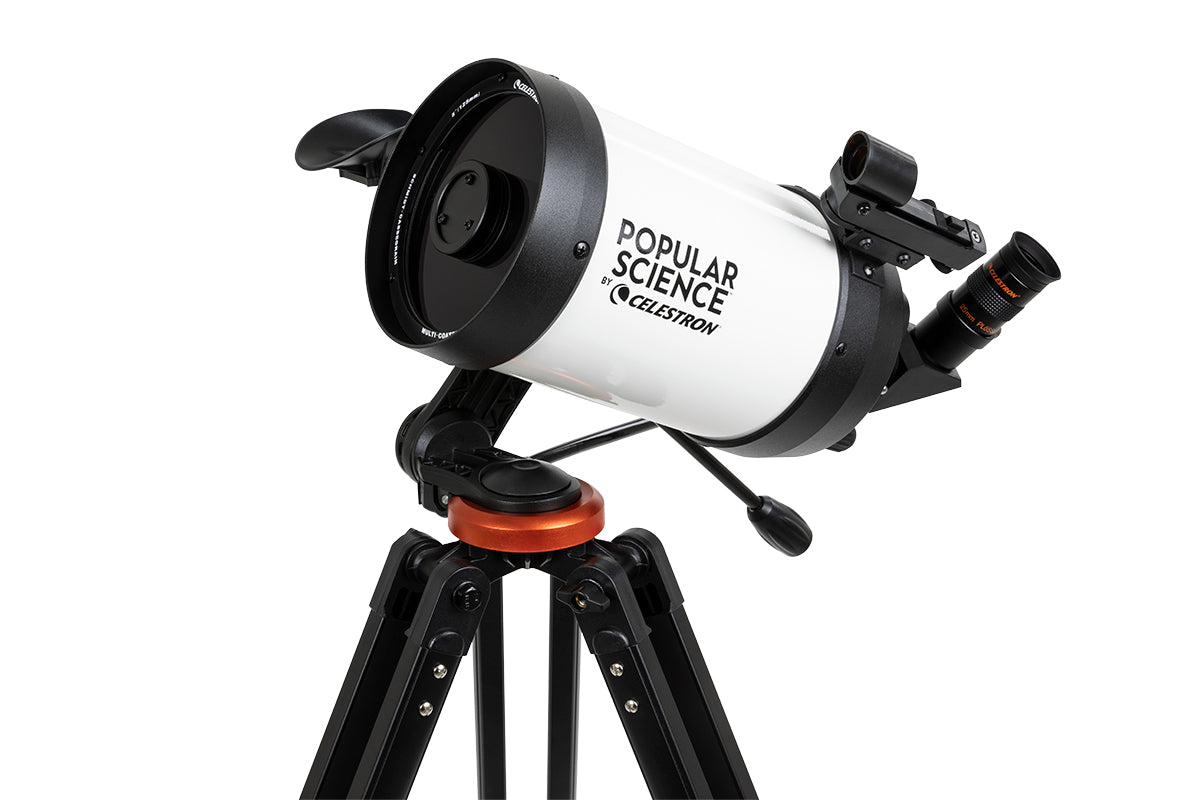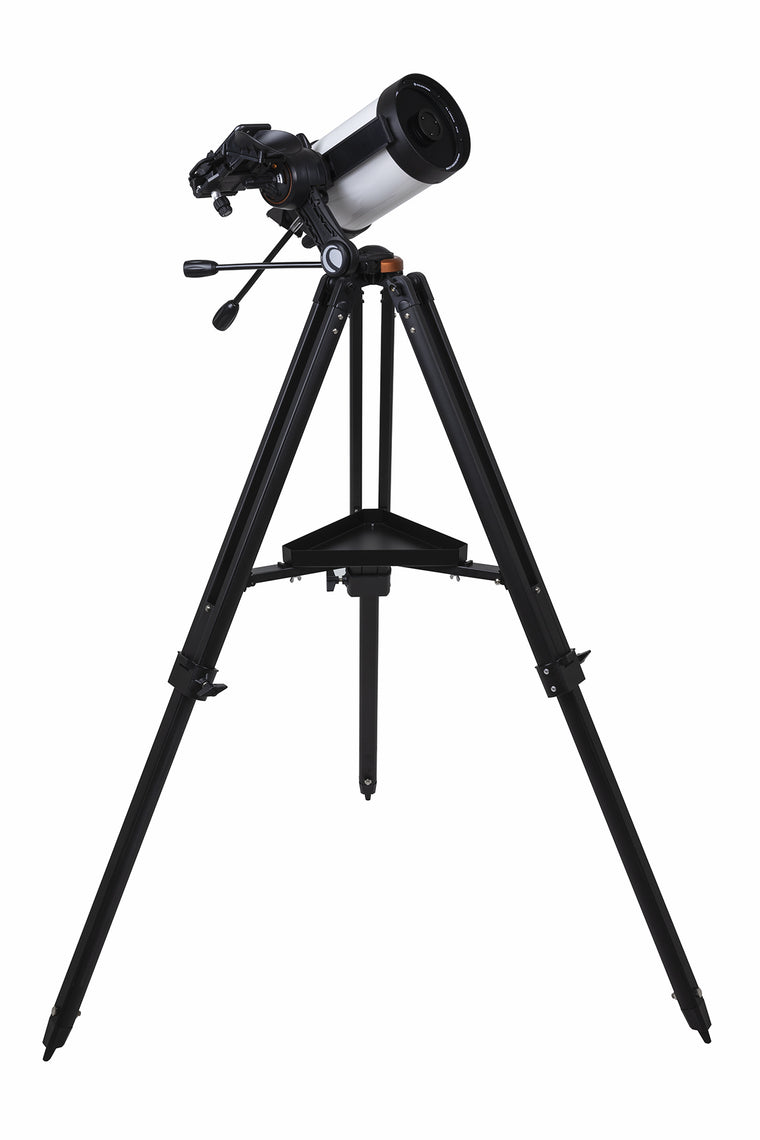Description
Celestron has reinvented the manual telescope with StarSense Explorer—the first telescope that uses your smartphone to analyze the night sky and calculate its position in real time. This special edition Popular Science by Celestron StarSense Explorer is ideal for beginners thanks to the app’s user-friendly interface and detailed tutorials. It’s like having your own personal tour guide of the night sky.
Dock, Launch, Explore
Leave complicated star charts, imprecise planetarium apps, and computerized mounts behind. With StarSense Explorer, locating objects has never been easier, faster, or more accurate. Within minutes of setting up the telescope, you’ll be navigating the sky with confidence. Simply place your phone in the unique StarSense dock and launch the StarSense Explorer app. After aligning your phone to the telescope’s optics (a quick, 2-minute procedure), StarSense Explorer generates a list of celestial objects currently visible. Make your selection and arrows appear onscreen, guiding you as you to move the telescope. When the object is ready to view, the bullseye turns green.
Smartphone Compatibility
Popular Science by Celestron StarSense Explorer works with most modern smartphones, including iPhone 6 and up and most devices running Android 7.1.2 or later manufactured since 2016. For a complete compatibility list, click here.
Patented StarSense Sky Recognition Technology
StarSense Explorer uses patented technology and your smartphone to determine exactly where the telescope is pointed in the night sky. A Lost in Space Algorithm (LISA), like the ones satellites use in orbit to correctly orient themselves, helps the app match star patterns it detects overhead to its internal database.
While other astronomy apps may claim that they can help you find objects, they rely exclusively on the phone’s gyros and accelerometers, which aren’t as accurate as LISA technology. No other app can accurately tell you when your target is visible in the eyepiece.
High Quality Altazimuth Mount with Slow Motion Control
An ultra-stable altazimuth mount provides a sturdy foundation for StarSense Explorer DX. Slip clutches and geared slow motion controls in both axes help you move the telescope smoothly and zero in your target. As celestial objects appear to drift across the night sky, you’ll be able to follow them with just a few turns of the knobs. It’s all anchored by an adjustable, full-height tripod.
Dazzling Views with High Quality Optics
With a large 5” Schmidt-Cassegrain optical tube—Celestron’s tried-and-true optical design for over 50 years—this telescope has enough light gathering ability to bring out impressive detail in celestial objects while remaining compact and lightweight. You can expect sharp, bright views of Jupiter’s four Galilean moons, its cloud bands and Great Red Spot, the rings of Saturn, the trapezium in the Orion Nebula, and the beautiful Pleaides Open Star Cluster. While the StarSense Explorer DX 130 Newtonian has a slightly larger aperture, the 5" Schmidt-Cassegrain has twice the focal length of the 130, allowing higher magnification for better lunar and planetary views.
All air-to-glass surfaces are coated with our StarBright XLT optical coatings to visibly increase contrast and light transmission for brighter deep space views. With StarBright XLT, you’ll be able to discern subtle details while viewing the Moon and planets as well as faint galaxies and nebulae. For more information about our patented StarBright XLT coatings, visit here.
Perfect for the City or Dark Sky Sites
Even if you live in a light polluted city location, the Popular Science by Celestron StarSense Explorer is advanced enough to be able to pick out Jupiter, Saturn, Venus, the Orion Nebula, double stars, and a few more of the most famous celestial objects.
But if you can take the telescope to an even slightly darker location, more objects will become visible. With this 5” Schmidt-Cassegrain and relatively dark skies, the Andromeda Galaxy, Hercules Open Star Cluster, and so many more are easily within your reach.
More about Popular Science
For nearly 150 years, POPULAR SCIENCE has pointed people to the wonders of science, technology, and the future. We partner with designers & manufacturers who share our values of INNOVATION, QUALITY and SCIENCE to bring meaningful products to consumers like you.
Optical Tube Info:
Optical Design: Schmidt-Cassegrain
Aperture: 125mm (5")
Focal Length: 1250mm (49.21")
Focal Ratio: f/10
Focal Length of Eyepiece 1: 25mm (0.98")
Magnification of Eyepiece 1: 50x
Focal Length of Eyepiece 2: 10mm (0.39")
Magnification of Eyepiece 2: 125x
Barlow Lens: Not Included
Finderscope: StarPointer™ red dot finderscope
Star Diagonal: Erect image 90° (1.25")
Optical Tube: Aluminum
Highest Useful Magnification: 295x
Lowest Useful Magnification: 18x
Limiting Stellar Magnitude: 13
Resolution (Rayleigh): 1.11 arc seconds
Resolution (Dawes): 0.93 arc seconds
Light Gathering Power (Compared to human eye): 329x
Secondary Mirror Obstruction: 51mm (2.0")
Secondary Mirror Obstruction by Diameter: 16.6%
Secondary Mirror Obstruction by Area: 40%
Optical Coatings: StarBright XLT
Optical Tube Length: 330mm (13")
Optical Tube Diameter: 152.4mm (6")
Optical Tube Weight: 5 lbs (2.26 kg)
Dovetail CG-5 Dovetail Bar
Mount Info:
Mount Type: Manual Alt-Azimuth
Height adjustment range (includes mount and tripod): Aluminum, 1320.8mm (52") max height
Accessory Tray: Yes
Tripod Weight: 9.2 lbs (4.17 kg)
Slew Speeds: Manual
GPS: Uses phone's GPS
Dovetail Compatibility: CG-5 Dovetail bar
Power Requirements: None (Recommend PowerTank Glow to keep phone charged while using App)
Alignment Procedures: Use StarSense Explorer App
Software: StarSense Explorer App, SkyPortal App, and Celestron Starry Night Basic Edition Software
Total Kit Weight: 14.2 lbs (6.44 kg)
Included Items: Optical tube
Mount and tripod (preassembled)
25mm and 10mm eyepieces
Erect image diagonal
StarPointer finderscope
Accessory tray
StarSense Explorer phone dock
Solar Warning
Never look directly at the Sun with the naked eye or with an optic (unless you have the proper solar filter). Permanent and irreversible eye damage may result.
Never use your optic to project an image of the Sun onto any surface. Internal heat build-up can damage the optic and any accessories attached to it.
Never leave your optic unsupervised. Make sure an adult who is familiar with the correct operating procedures is with your optic at all times, especially when children are present.







